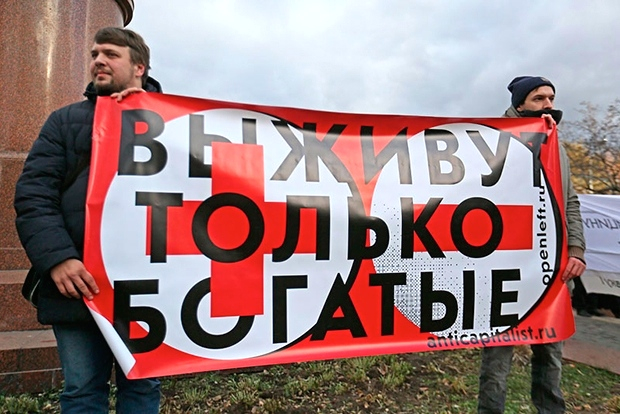by Ilya Matveev, a researcher and teacher
November 19, 2014
OpenLeft.ru
Translated into English by TheRussianReader.
Despite attempts to confuse and misinform the public, protests in the social sector will continue to grow.
Reforms of the social sector in post-Soviet Russia have always had a very important feature: their course has been completely confusing and opaque, and everything connected to the reforms, even their strategic goals (!), has been shrouded in mystery. This is partly a consequence of the extreme fragmentation of the Russian state apparatus, unable to implement a completely coherent reform strategy, but in many ways it is a quite deliberate policy: a policy of disinformation.
The Russian authorities are confident that painful reforms are not necessary to explain, let alone announce, sometimes. One can always give journalists the shake, because who are they anyway? As for the public, it suffices to blame them for not understanding the grand design, for confusing reform and optimization, optimization and modernization, modernization and business as usual. This “spy” policy towards reform leaves wide room for maneuvering. It is always possible to note the level of public indignation and pull back a bit (while making the obligatory remark, “That was the way it was intended!”).
This has been borne out by research. For example, Linda J. Cook, author of Postcommunist Welfare States, has written that when carrying out reforms, both the parliament and the government have relied on a strategy of delays, deliberate obfuscation, and denial of responsibility.
At moments of crisis, chaos and uncertainty in the social sector only grow. Yet now, in my opinion, an absolutely unique situation has taken shape.
First of all, the social sector in Russia has been moved into an austerity regime. This must be noted. Funding will be cut, along with the quantity (and quality) of public services in education, health, and other areas. But how has this austerity been organized?
Paradoxically, it was launched not by a technocratic decision hatched in the bowels of the government, but by Putin’s populist decree on increasing the salaries of state employees. Disinformation has reached its peak: cuts are made to the social sector via a decree that at first glance has nothing to do with it. However, it does, as it turns out. The mechanism is simple. Given insufficient federal subsidies for executing the decree, the regions can carry it out only one way: by cutting some workers while increasing the workload (along with the salaries) of other workers. Of course, the decree does not function in isolation: for example, in health care it is combined with measures to move to “single-channel” financing, meaning that salaries have to be increased, but the only available money is from the health insurance fund. Together, the decree and single-channel financing form a lethal package, leading to indiscriminate layoffs and the closure of health care facilities.
To read the whole article, visit TheRussianReader.

